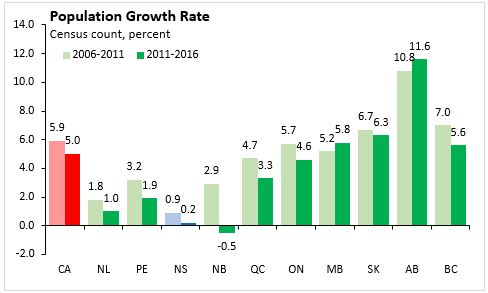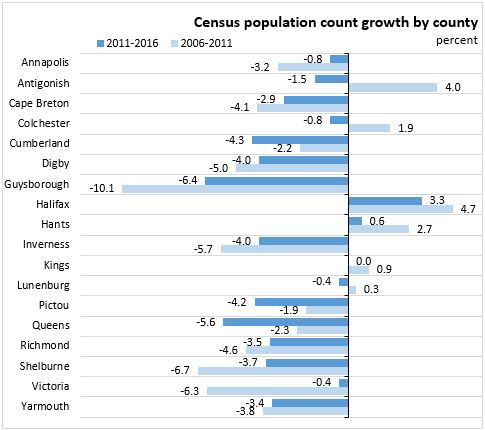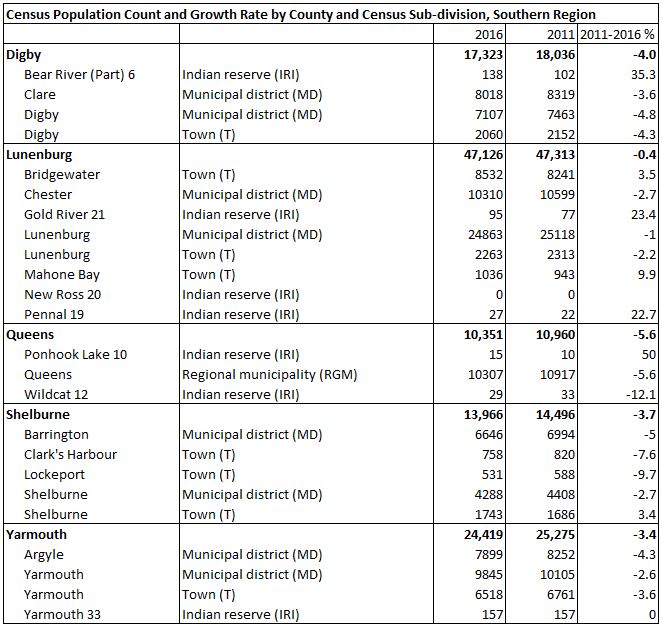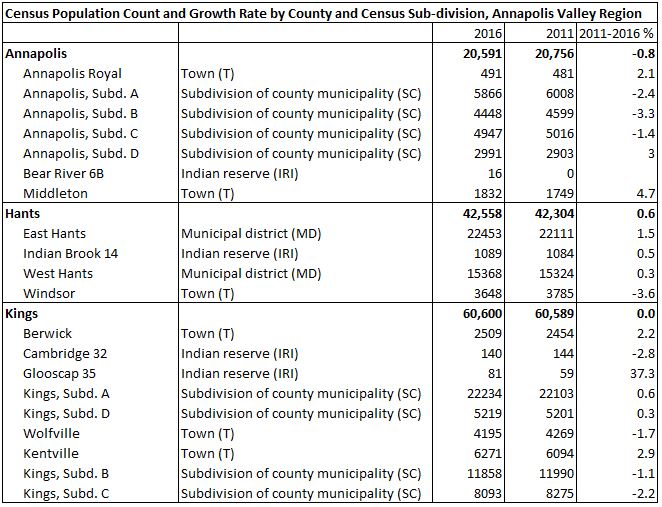The Economics and Statistics Division maintains archives of previous publications for accountability purposes, but makes no updates to keep these documents current with the latest data revisions from Statistics Canada. As a result, information in older documents may not be accurate. Please exercise caution when referring to older documents. For the latest information and historical data, please contact the individual listed to the right.
<--- Return to Archive
For additional information relating to this article, please contact:
February 08, 2017CENSUS POPULATION COUNTS, 2016 
Nova Scotia's census population count grew by 0.2 per cent from 2011 to 2016, to a count of 923,598. Nova Scotia's intercensal population growth rate fell in 2011-2016 compared to growth of 0.9 per cent during 2006-2011.
Note that this represents the raw count recorded during the 2016 Census and does not correct for people who did not respond to the census or for people who may have been double counted. The census count is typically below the official estimate. For comparison, the latest official estimate of Nova Scotia's population for July 1, 2016 was 949,501.

Across the country, intercensal population growth rates declined in every province except Alberta. Nationwide, the population count grew by 5.0 per cent during 2011-2016, down from 5.9 per cent in 2006-2011. Growth was fastest in the four western provinces, especially Alberta. Growth was slowest in Atlantic Canada, as a reuslt of interprovincial migration losses, lower immigration levels, and lower natural population growth compared to the rest of Canada. New Brunswick was the only province with population count decline during 2011-2016. As of 2016, 6.6 per cent of all Canadians were living in the Atlantic provinces, compared to 10.0 per cent in 1966.

Across the province, the population count declined in every county except Halifax (+3.3 per cent), Hants (+0.6 per cent), and Kings (unchanged). The steepest declines were in Guysborough (-6.4 per cent), Queens (-5.6 per cent), Cumberland (-4.3 per cent), and Pictou (-4.2 per cent). The rate of growth declined in nine counties compared to the 2006-2011 intercensal period, including Halifax, Hants, and Kings. Many of the counties which saw the sharpest declines in 2006-2011 saw slower declines in 2011-2016, including Guysborough, Shelburne, Victoria, Inverness, and Cape Breton.

The tables below show a breakdown of the census population count within counties by census sub-division. Note that the sub-divisions within a county add up to the county total. For example, in Digby county, the population counts for Bear River, Clare, Digby municipal district, and the town of Digby add up to the county total. In this example, the town of Digby is not a subset of the Digby municipal district.
Note that many of the sub-division names (as defined by Statistics Canada) do not match up with the names of local communities in an obvious way. For reference, see this map of Nova Scotia's census sub-divisions. Note that the map file may take a minute to load.





Source: Statistics Canada - 2016 Census Population and Dwelling Counts; Sub-division tables.
<--- Return to Archive